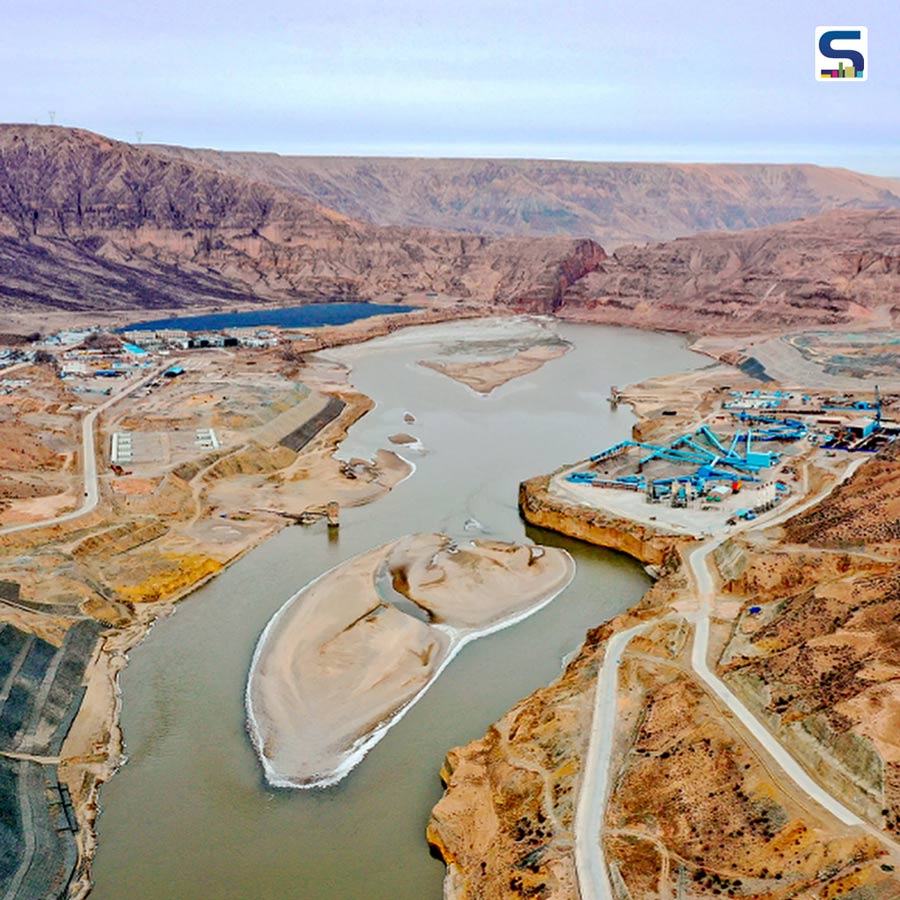
China, which already bags the title of creating the world's largest 3D-printed pavilion and the first retractable 3D-printed bridge, has recently developed a plan to build the world's largest dam- Yangqu dam- on the Tibetan Plateau using 3D printing processes and artificial intelligence (AI). What is most surprising about this massive hydropower dam is that no human workers will be involved in developing the entire project. The project design is to show the world what possibility it makes when we combine artificial intelligence with additive manufacturing in construction. The construction work of the 590-foot dam is slated to be completed in the next two years. Read more about the project below at SURFACES REPORTER (SR):
Also Read: World's First 3D Printed Stainless Steel Bridge in Amsterdam by Joris Laarman | SR Project Update
The Science and Technology Department of Tsinghua University has planned the design layout for creating the world's largest dam in China. The dam is constructed layer by layer on the Tibetan Plateau.
The scientists believe that once the construction of the dam is finished, it will provide about 5 billion kWh of electricity every year to the Chinese province of Henan. That means the project will help a total of 100 million people.
The high voltage transmission line of about~4920ft transmits electricity. This line has been constructed separately from the transmission of green energy to keep sustainability at the core of the project.
No Human Operators Required
The construction work of the massive dam is done with the help of robots, which means no human workers are required on the site.
Unmanned trucks will carry building materials, while driverless pavers and bulldozers help in the construction. This will be done with the help of a central AI system that controls this complex automated assembly line, including a fleet of unmanned vehicles.
Sensors will be fitted in rollers to press and lay down each layer of the dam. Artificial Intelligence machines will analyze that the construction process is going as per plan.
Also Read: Fibonacci House - Canada Has Got Its First 3D Printed Concrete Tiny Home
Eliminate Human Error
As the entire construction of the dam project will be done using AI and construction robots, it will eliminate any human error. Further, it also removes the risk of human injury that is generally common on any construction site.
The project will definitely provide a blueprint for other construction projects, such as the construction of roads using AI and 3D printing. The scientists believe that upon completion, the project will reach a total size of ~520ft, which would make it the world's largest dam made using robotic 3D printing facilities breaking the current record of the two-storey office building in Dubai.
Keep reading SURFACES REPORTER for more such articles and stories.
Join us in SOCIAL MEDIA to stay updated
SR FACEBOOK | SR LINKEDIN | SR INSTAGRAM | SR YOUTUBE
Further, Subscribe to our magazine | Sign Up for the FREE Surfaces Reporter Magazine Newsletter
Also, check out Surfaces Reporter's encouraging, exciting and educational WEBINARS here.
You may also like to read about:
House Zero: Next Gen 3D Printed Home Designed by Icon and Lake | Flato Architects | Texas
First Concrete 3D Printed Houses Built For Indian Army Jawans | Military Engineering Services | Gujarat | SR Report
This Eco Village in Ecuador is 3D Printed From Cacao Shell Waste Biofilaments | Valentino Gareri Atelier
And more…